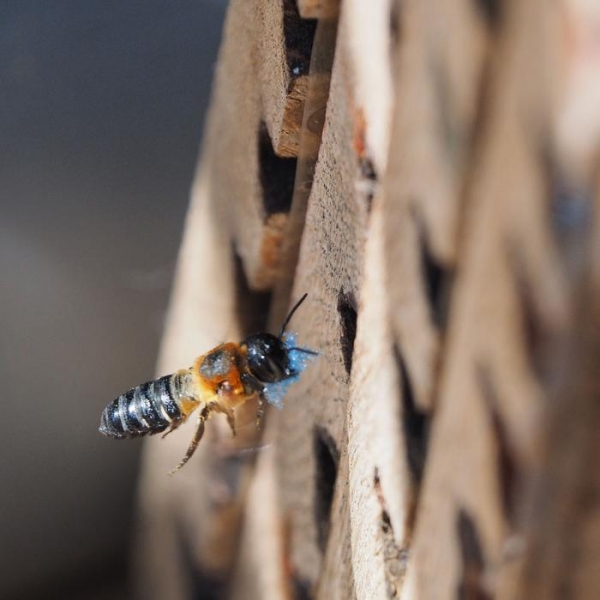A new review study in Nature Communications is the first to systematically show the harmful effects of nano- and microplastics on bees and other beneficial insects. Their function as pollinators is impaired by the plastic particles. This harbours risks for global food security.
Nano- and microplastic particles (NMP) are increasingly polluting urban and rural landscapes, where bees and other beneficial insects come into contact with them. If insects ingest plastic particles from food or the air, it can damage their organs and cause changes in their behaviour, preventing them from properly performing ecosystem services such as pollination and pest control. Plastic pollution thus poses considerable risks to biodiversity, agricultural production, and global food security. These are the main findings of a new review in the journal Nature Communications, which was conducted by an international team including researchers from the University of Freiburg.
Plastic from Films, Fertilizers, Water, and the Air Ends up on Farmland
Microplastic particles are between one micrometre and five millimetres in size; still smaller particles are referred to as nanoplastics. Whereas the harmful effects of NMP in water and for individual species are well documented, there have as yet been no systematic reviews on how the particles affect agricultural ecosystems. To fill this gap, the authors of the review summarized 21 already published individual studies for the first time. They were interested particularly in the question of how pollinator insects and other beneficial insects come into contact with NMP and what consequences the ingestion of the particles has for them, as well as for the ecosystems that are dependent on them and for agricultural production.
Read more at University of Freiburg
Image: A mortar bee carries a piece of polyethylene foam into her nest. (Credit: Felix Fornoff)
Pollution Agriculture Environmental Policy Top Stories
